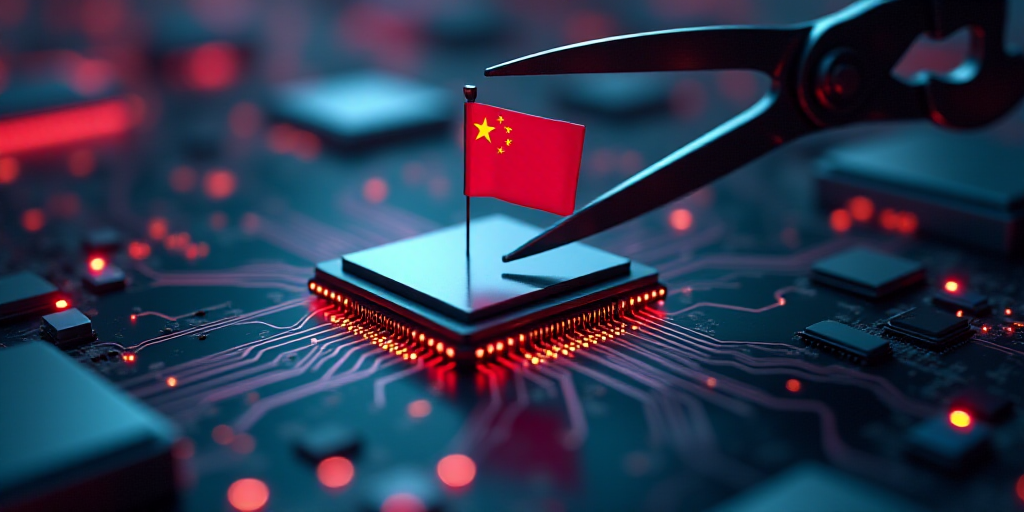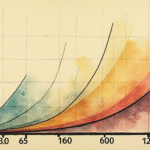New Strategy by the U.S.
The U.S. Department of Commerce announced on May 12 a new approach to restrict China’s access to advanced semiconductors, crucial for AI development. This strategy aims to reverse measures implemented under President Joe Biden’s administration, which were designed to safeguard U.S. chip technology from transfer to China.
- These measures, set to take effect on May 15, allowed “trusted” countries to freely import AI chips but restricted or prohibited their export to many others, including China.
- The Department of Commerce stated that this system would have “strangled U.S. innovation.”
- The announcement specifically targeted Huawei’s Ascend chip, the most advanced from the Chinese tech giant, as a violation of U.S. export regulations.
- A warning was issued about potential consequences if U.S.-made AI chips are used to train Chinese AI models.
Lizzi Lee, a researcher at the Asia Society Policy Institute, explains that this announcement aims to “redirect the force” of restrictions directly at China. Manoj Harjani, an RSIS researcher in Singapore, notes that this shift “clearly puts pressure on China and Huawei.”
Different from Biden’s Approach
This strategy contrasts sharply with Joe Biden’s approach, which emphasized coordination with U.S. allies to exclude China. Marina Zhang, a University of Sydney professor, points out that Trump’s recent measures adopt a “more selective” approach.
- These policies are flexible enough to respond to allies’ demands and protect U.S. companies’ global market position while aggressively targeting specific Chinese firms like Huawei through unilateral measures.
China’s Response
China strongly condemns this U.S. policy, accusing it of “intimidation” and abusing restrictions to “contain” the Asian giant’s development.
- This rhetoric indicates that China “will not easily concede,” according to Zhang.
- However, these restrictions are expected to significantly hinder Huawei’s access to advanced technologies from U.S. chip manufacturers.
- The AI rivalry has intensified and could complicate future negotiations on global AI governance, Zhang adds.
China has made impressive strides in AI. Earlier this year, DeepSeek, a startup, surprised the sector with a chatbot that competed with U.S. counterparts at a fraction of the cost.
- Alibaba and Xiaomi also announced significant AI investments.
Experts relate this dynamic to China’s strategic goal of reducing dependence on foreign providers. “The strategy isn’t about defeating the U.S.; it’s about being competitive in the short term while gaining time to develop national capabilities and close the technological gap,” explains Lee.
Technological Rivalry
The AI competition is part of a broader context of trade tensions between Beijing and Washington.
- Following a series of mutual tariff hikes initiated by Trump, both countries recently announced significant reductions in these tariffs for 90 days.
- However, Lee notes that this truce “does not aim to halt” U.S. tech restrictions against China.
- “Tariffs can be adjusted, but the technological rivalry is increasingly embedded in both countries’ national security policies,” Lee observes.
- “If the U.S. hardens its stance, including adding Chinese AI giants to blacklists, I struggle to imagine China making significant concessions in other areas,” Lee concludes.
Key Questions and Answers
- What is the new strategy by the U.S.? The U.S. Department of Commerce announced a new approach to restrict China’s access to advanced semiconductors, crucial for AI development. This strategy aims to reverse measures implemented under President Joe Biden’s administration.
- How does this strategy differ from Joe Biden’s approach? Biden focused on coordinating with U.S. allies to exclude China, while Trump’s recent measures adopt a more selective approach, targeting specific Chinese firms like Huawei.
- What is China’s response to these new U.S. restrictions? China strongly condemns the policy, accusing the U.S. of intimidation and abusing restrictions to contain its development. Despite this, the restrictions are expected to significantly hinder Huawei’s access to advanced technologies from U.S. chip manufacturers.
- How does this AI rivalry fit into the broader context of U.S.-China trade tensions? The AI competition is part of a broader context of trade tensions, with both countries recently reducing tariffs but the technological rivalry remaining deeply embedded in national security policies.






